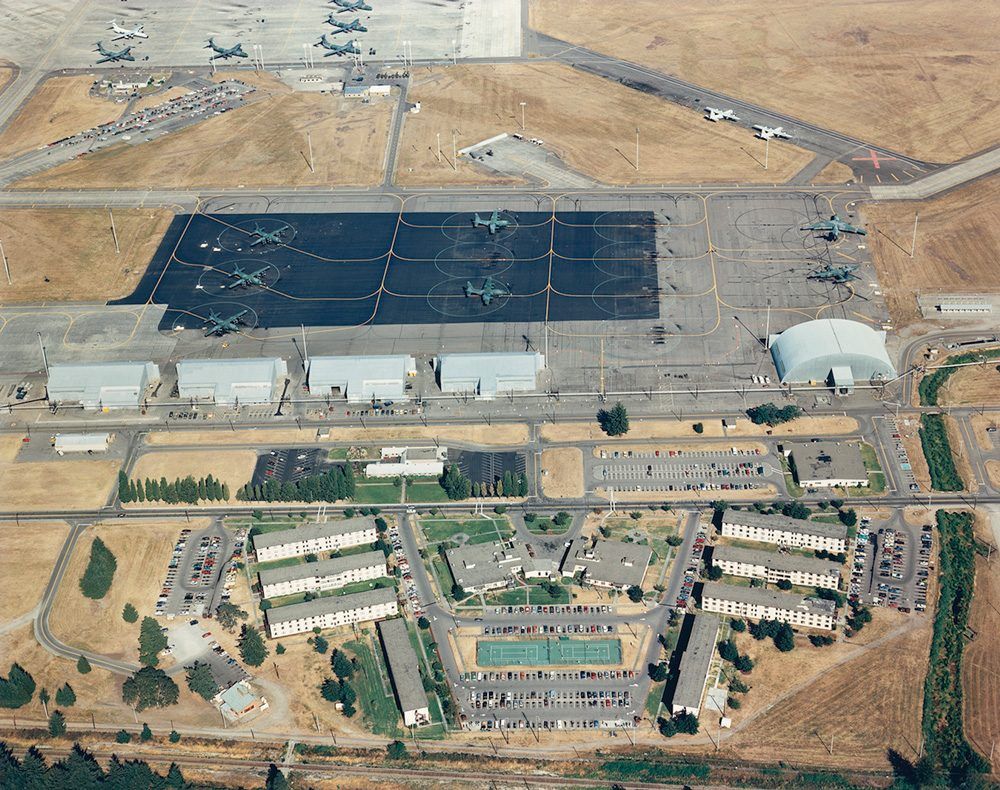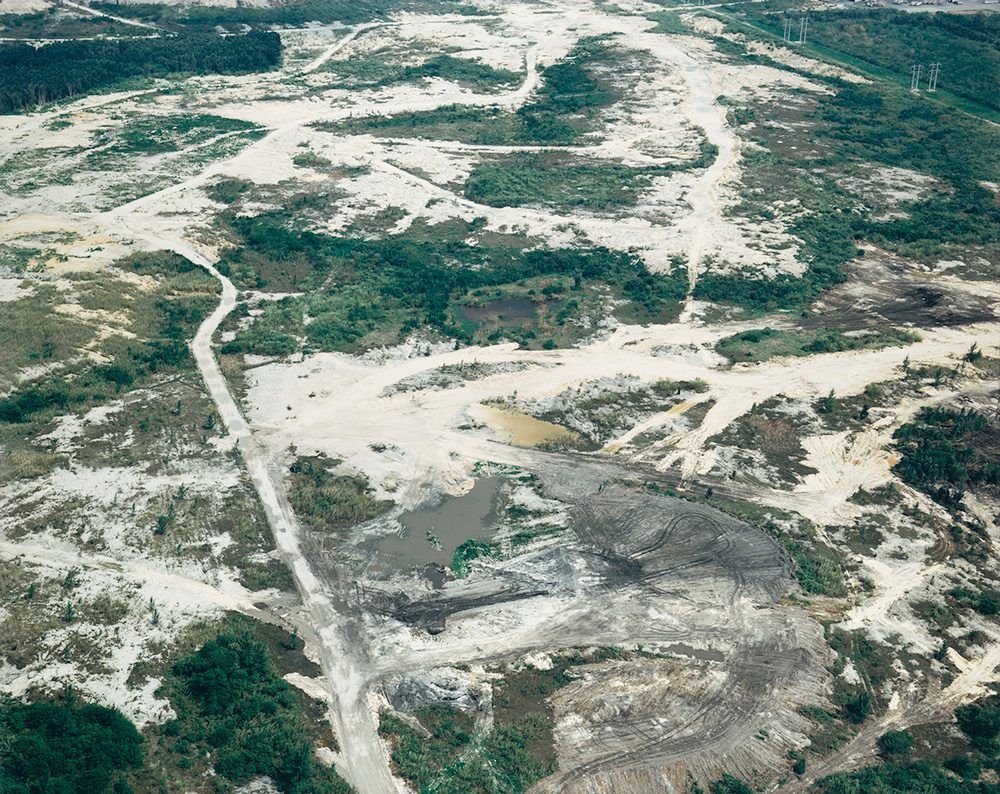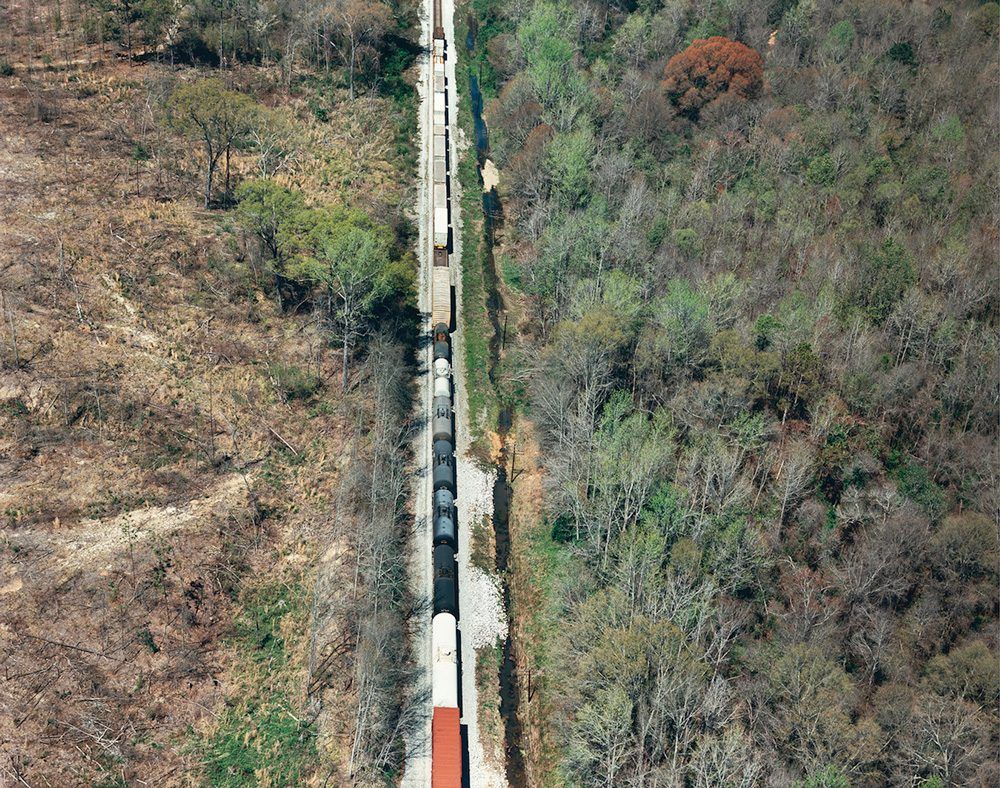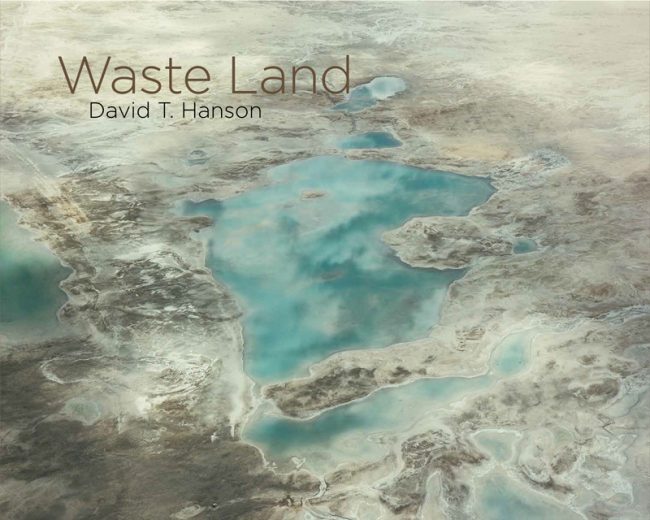blog
Book Review: Waste Land by David T. Hanson

McChord Air Force Base, Tacoma, Washington, 1986
In 1980 more than 400,000 toxic waste sites overspread the United States, I learn from this book. Moreover: “The Environmental Protection Agency (EPA) declared 400 of these highly hazardous and in need of immediate attention. In just a few years, the numbers of these ‘Superfund’ sites more than tripled.” Not many have seen them and most are unaware of them. Needless to say, it shouldn’t be like that. And so photographer David T. Hanson did what a photographer is able to do in order to put things right – make these sites seen.
Over the course of a year, beginning in 1985, he traveled to 45 states on a Guggenheim Fellowship to make aerial photographs of 67 such sites. The photographs of these dangerously polluted places can be seen in this tome, each juxtaposed with a modified topographic map and the EPA’s own description of the site’s history and hazards.

Northwest 58th Street Landfill, Hialeah, Florida, 1986
I particularly warmed to the (very brief and very angry) foreword by Wendell Berry that starts like this: “It is unfortunately supposable that some people will account for these photographic images as ‘abstract art,’ or will see them as ‘beautiful shapes.’ But anybody who troubles to identify in these pictures the things that are readily identifiable (trees, buildings, roads, vehicles, etc.) will see that nothing in them is abstract and that their common subject is a monstrous ugliness.” In other words: Don’t be swayed by your first impulse, think, reflect, have a closer look, ask questions such as ‘what do my eyes show me?’, ‘what does the photographer want me to focus on, and to think about?’.
To confront reality is something human beings generally shy away from, and especially when this reality is unpleasent, ugly and man-made. Yet we need to look at it. And we need to ask questions, hard questions. Is this really how we want to treat the environment on which our survival depends?

Perdido Ground Water Contamination, Perdido, Alabama, 1986
Although an important historic document (these photographs were taken 33 years ago), I’m not so sure in regards to its current relevance. Differently put: I would have liked to know whether these sites still exist. Sadly, the book remains silent on this. Also: that the book contains an essay (Notes on Waste Land) with only minor revisions of an already published essay (in ‘Waste Land: Meditations on a Ravaged Landscape, 1997), makes it look a bit like a recycling project. Nevertheless, I think Waste Land a necessary book in the sense that we need to be taught, instructed and shown how the environment is continually destroyed – and this book does just that. Especially the just mentioned essay provides rich food for thought. This is how it concludes:
“History seems to indicate that at some point in time all cultures reach a stage when they are held accountable by nature. There is considerable evidence that most of the major civilizations of the past destroyed themselves, at least in part, by the misuse of their natural environments. Our society seems to have little responsibility or consideration for what rare and precious gifts we have been entrusted with, and how we have squandered them. Perhaps we have reached that point in time when we must be held accountable for the enormous destruction that we have inflicted upon our natural world and pur social communities.
The Aboriginal people of Australia give voice to this conflict between technology and nature when they ask, “What will you do when the clever men destroy your water?”
Waste Land ends with a very learned appreciation of the work of David T. Hanson by Jimena Canales who, among quite some other things, points out that “while Adams, Porter, and their numerous imitators were preoccupied with photographing environments at risk of disapperance, Hanson is concerned with what might stay around for too long.”

Waste Land
By David T. Hanson
Taverner Press, Fairfield, Iowa, 2018
Distributed by D.A.P. / Distributed Art Publishers. Inc,
New York, NY 10004
http://www.tavernerpress.com/
Location: Online Type: Book Review
Events by Location
Post Categories
Tags
- Abstract
- Alternative process
- Architecture
- Artist Talk
- artistic residency
- Biennial
- Black and White
- Book Fair
- Car culture
- Charity
- Childhood
- Children
- Cities
- Collaboration
- Community
- Cyanotype
- Documentary
- Environment
- Event
- Exhibition
- Faith
- Family
- Fashion
- Festival
- Film Review
- Food
- Friendship
- FStop20th
- Gender
- Gun Culture
- Habitat
- Hom
- home
- journal
- Landscapes
- Lecture
- Love
- Masculinity
- Mental Health
- Migration
- Museums
- Music
- Nature
- Night
- nuclear
- p
- photographic residency
- Photomontage
- Plants
- Podcast
- Portraits
- Prairies
- Religion
- River
- Still Life
- Street Photography
- Tourism
- UFO
- Water
- Zine

Leave a Reply